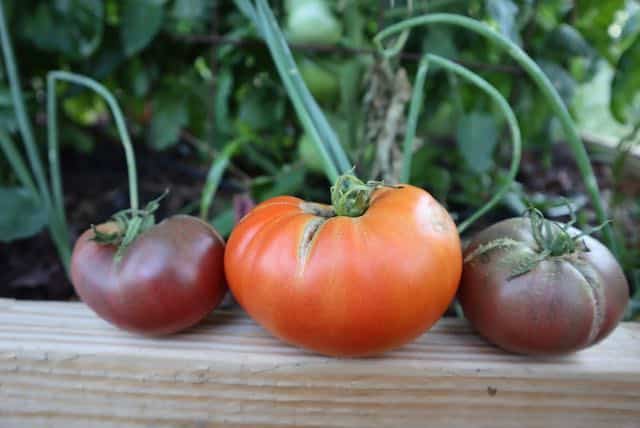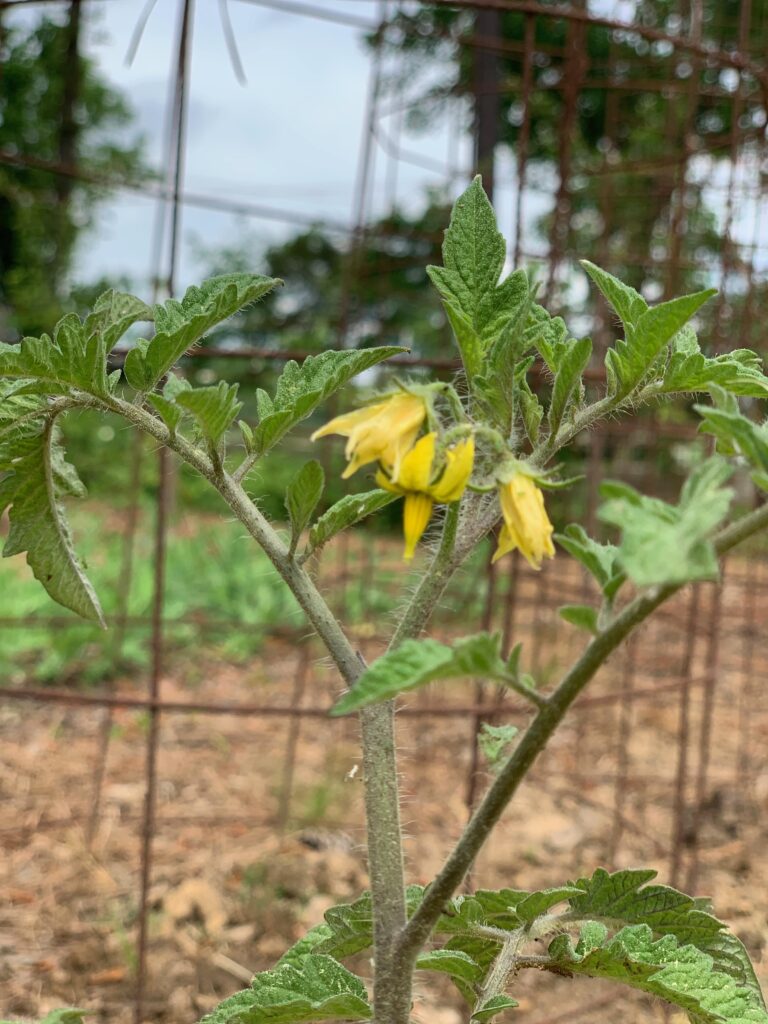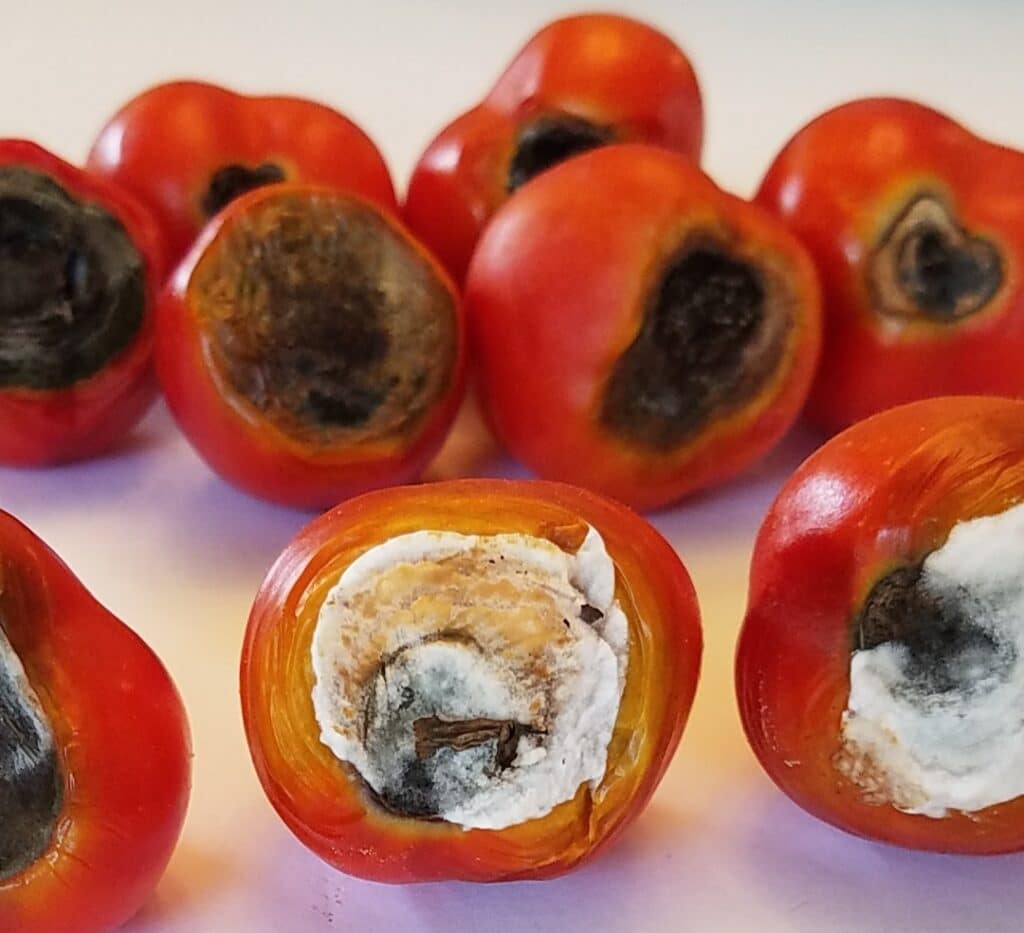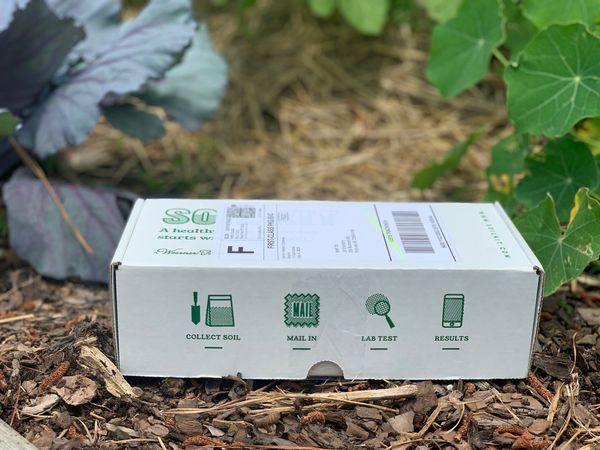3 Common Tomato Problems for the Beginning Gardener
Is this your first year growing tomatoes? Are you seeing some things on your plants and you aren’t sure exactly what’s going on? Here are 3 common tomato growing problems that gardeners often experience and how to deal with them
The most common crop beginning gardeners choose when they begin their gardening journey is tomatoes. Whether it’s to make them into tomato sauce and spaghetti sauce or use them fresh in the summer for salsa and bruschetta, it’s a staple crop for most gardeners.
What happens, though, when you realize that growing tomatoes isn’t as easy as you expected? What do you do when you run into unforeseen problems?
While the problems affecting tomato growing are many, there are three common issues most gardeners face. Let’s talk about those three common problems plus what you can do to fix them.

Blossoms But No Fruit
If you see blossoms for on your plant but those flowers don’t form fruit, this is called blossom drop. This common occurrence is caused by a lack of pollination that is usually due to environmental stressors. Tomato flowers are called “perfect flowers” meaning that they have both male and female parts in each flower. This means they can be pollinated by wind, bees or other pollinators.
Why, then, would a flower that can be pollinated so easy not form a fruit?
Tomato flowers often will not pollinate when the daytime temps are below 70 degrees but above 90 degrees. They also don’t pollinate well when the humidity is below 40% or above 70%. Another factor that can affect pollination is wind. If it’s too windy it will dry out the pollen in the flower and if it’s not windy enough, the pollen won’t shake in the flower.
Getting a Goldilocks vibe here?

What can you do in order to make sure that all these factors are met in order for pollination to occur? First, identify the most likely culprit — temperature, humidity, or wind.
If it’s a temperature issue, there’s not a whole lot you can do. Normally, if you wait it out and work on keeping the plant healthy, the temperatures will come into range and fruit will begin to form. If your climate lends itself to sustained heat above 90F, you may not see a lot of fruit until the fall when the weather cools off. Some gardeners add shade cloth during periods of heat, which helps bring the temperature down a few degrees.
If it is an issue of humidity or wind, you can always manually shake the flower either with your fingers, an electric toothbrush, or a veggie bee. Sometimes this helps; sometimes it doesn’t. It’s worth a try, especially if you have a manageable amount of tomato plants.
As a side note, if you aren’t seeing any flowers at all, this is a sign of plant stress. Perhaps the plants aren’t getting enough sunlight or water. Maybe the soil isn’t ideal. The plants can also be stressed if dealing with intense pests or disease pressure. Determine what you think it might be and see what can be done to fix the issue.
The good news is, most of the time, blossom drop can be remedied, either by taking action or by waiting.

Blossom End Rot
Blossom end rot is a very common but also misunderstood condition. What you will see is rotting and a large black spot on the bottom of the fruit. It happens more often in paste tomatoes or elongated tomato varieties, but it can occur in larger-fruited tomatoes as well.
Blossom end rot occurs when adequate calcium isn’t able to reach the fruit. But don’t add calcium to your soil just yet. Most likely, your soil has plenty of calcium; instead, the problem is with the uptake of the calcium from the soil. The uptake issue is most often caused by hot and dry temperatures with irregular watering.
Therefore, blossom end rot is most often caused by lack of consistent water, not a calcium deficiency in the soil. Before you do anything else, ensure your plants are getting plenty of water. (Learn more about irrigation options here.)

While lack of consistent water is the most common culprit of blossom end rot, there are others. High nitrogen levels can make the plant produce too much leafy green growth that will take away from the calcium that should be going to the fruit that is forming.
Another culprit is low temperatures at the time of fruiting. Blossom end rot is often seen more on the first fruits that a plant produces due to the cool temperatures in the beginning of the season, especially if the tomato plant was planted early.
As a side note here: A foliar application of calcium also won’t fix this problem because calcium has to come up through the roots.
The easiest solution to this problem is to stay on top of watering your garden. Mulching your garden will keep the water in. Also, pick off the affected fruit so that the plant isn’t sending energy to that fruit. If the problem persists even after doing all of these things, perform a soil test.

Disease
The most common diseases that you will see in a tomato plant are early blight and septoria leaf spot. If you are able to identify either of these fungal diseases, trim off the leaves as much as you can. (This podcast episode goes more in depth on how to do this)

But, tomatoes do suffer from bacterial or viral diseases on occasion as well, and those are much worse. If you determine your plant has a disease that is bacterial or viral, take out the plant completely and dispose of (not in compost pile) so to not spread the disease.
When in doubt, take a photo of your tomato plant and email it to your local cooperative extension agent and they can help identify the problem. You can find your local cooperative extension service here.
–
The good news is most tomato issues are treatable, and while you may not be able to entirely fix them all, you can still hope for a good tomato harvest.

